No matter where you go, you will see someone looking at their smartphone and performing some action.
From booking flights to buying clothing, it is highly likely that more than half of the people around you are engrossed in their mobile devices.
Below are several statistics that support the growing usage of mobile apps (sources are in the infographic):
- App store consumer spending is predicted to increase globally by 92% to $157 billion
- The average US adult in 2019 spent three hours and 43 minutes daily on a mobile device
- Average mobile users check their devices 63 times daily
- There will be approximately seven billion mobile users worldwide by 2021
- 87% of mobile users check their devices at least an hour before going to sleep with 69% of them checking within five minutes before they sleep
- Over 50% of Internet traffic comes from mobile devices

What is Conversion Rate Optimization?
Conversion Rate Optimization (CRO) is vital for eCommerce sales, digital marketing, and online businesses.
It is the process of increasing the percentage of users that convert into paying customers by optimizing the steps involved in the buyer’s journey. These steps are part of a sales funnel and include when the user:
- Installs the app
- Opens the app
- Views the purchase user interface
- Subscribes
- Makes a purchase

The process above outlines the consumer journey from installing the app to purchasing from your company.
The app user interface (UI) where consumers can make purchases is what motivates people to take action. It usually includes benefits and features and is similar to a landing or subscription page.
When expertly designed, the UI will entice a user to sign up and follow the calls-to-action that lead to the end of the funnel where they make a purchase.
Keep the following scenarios in mind:
- A user can stop at any point in the journey; strive to minimize funnel abandonment. You should modify your funnel to encourage people to complete the steps that lead to the last phase where they make a purchase.
- Generally, users do not go through each step at the same time. They might install the app and open it later. Or they might download what you are giving away for free and not upgrade to a paying customer.
- The most effective funnels are multi-channel, meaning that users can enter your funnel from any online location such as Facebook and continue from another path such as the app itself.
You Must Include Analytics Tracking Tools Within Your App
For apps to be useful, they should include analytics tracking tools. This data provides invaluable insights that assist you to improve the UI and increase conversions.
This will enable you to count the number of users who complete a specific action in the app and keep track of your funnel’s performance.
Mobile apps are used extensively in almost every industry, including education, retail, financial, travel, and healthcare.
“The rich and interactive experiences we have come to expect on mobile apps have created new standards and expectations for all digital media including the web. The result is websites are evolving to become more app-like in their rich functionality.” – Raj Aggarwal, CEO of Localytics
Why Mobile App Analytics?
The only way to find out who is using your app, how they are engaging with it, and where they drop off is to use analytics.
Identify which steps in your app’s customer journey drive the most conversions, as well as where most users drop off.
Using insights from mobile web analytics will help you make informed business decisions, improve user experience and customer loyalty, and increase sales.
Without app analytics, you will not be able to identify the best ways to spend your time and resources and grow your business.
Given the prevalence of mobile app usage, how can you improve your mobile app conversions?
1. Define and Track All Steps in Your App Funnel
It is essential to define the events within your app funnel so you can track how many drop off at each event and what percentage of shoppers continue to the next step.
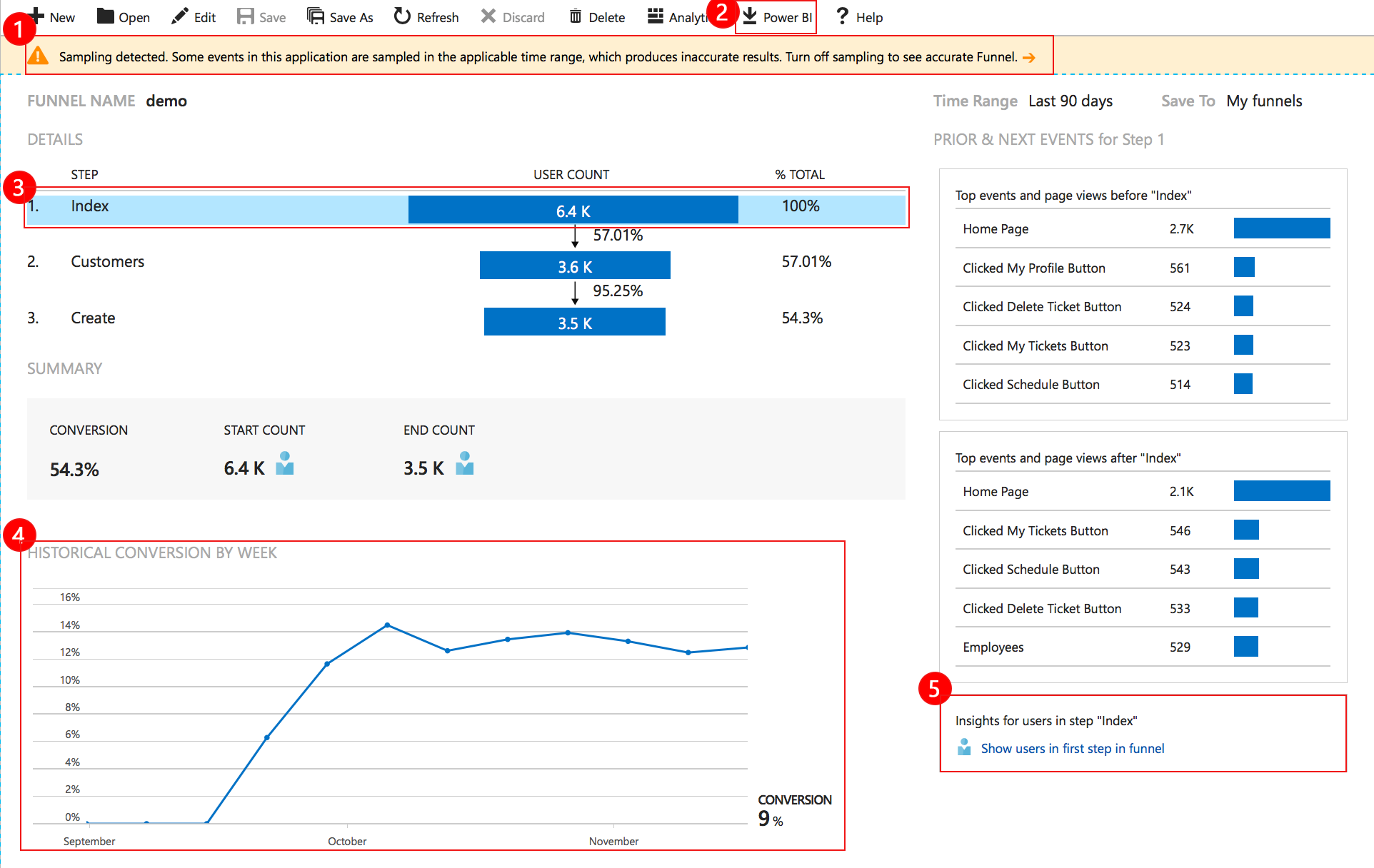
Many businesses do not look beyond the acquisition phase when examining the data and reporting generated by their app analytics.
“In 2020… There will be a widespread belief that the World Wide Web is less important and useful than in the past, and apps are the dominant factor in people’s lives.” – PewResearch Internet Project
2. Identify Which Metrics are Most Important
Because there are numerous metrics you can identify in mobile app analytics, you must define your key performance indicators (KPIs).
Focus on the metrics that are defined by your KPIs. Below are several examples of key metrics and how you can use them to optimize user engagement and acquisition.
User Acquisition Analytics Metrics
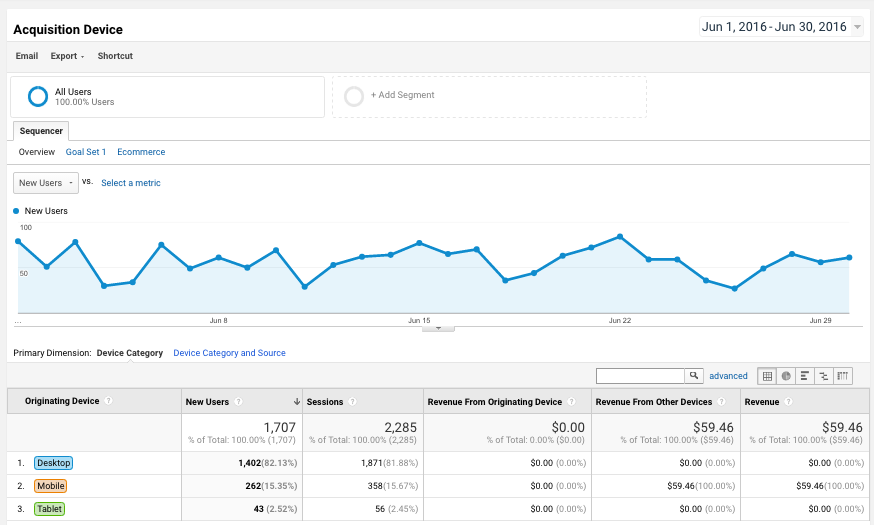
- How did users find your app? Was it a result of a campaign or event or did they find it organically? Use this information to determine the effectiveness of your paid investments.
- What is the average revenue per user acquired (ARPU)? Learn how to calculate the average revenue per user.
- How much does the acquisition of a new user cost? Divide the total cost of a campaign by how many became users as a result. Use this metric to calculate ROI and identify the most cost-effective methods to get new users.
- What is the lifetime value (LTV) of each user? How much do they spend before they stop using your app?

LTVs can help you identify why users stop using your app (churn). Optimize it to get users to stay and spend more time on your app.
User Engagement Analytics Metrics

- How many people installed your app? Note there is a difference between downloading and installing. Compare the number of installs and where the user found your app to learn which of your campaigns performed the best.
- Track events to gain insights into in-app user behavior activity. Look at page visits, when users add items to their cart, and how many complete a purchase. Be sure to track each stage of your funnel to identify which steps need to be optimized.
- What is the session rate? Sessions refer to users engaging with your app. This session data lets you know how often a user is opening your app and how they are progressing through your funnel. Use analytics to view sessions by location, time, and device to see when, how, and from where users are accessing your app. Analytics will also show you how many sessions it takes a user to make a purchase.
- What is your retention rate? How many users return to your app? See when users stop using the app and when they return. Use the information to detect where and why your app is losing users. This is especially useful if your app has built-in notifications as a means of stimulating engagement and retention. There’s a balance to strike between alerts that are timely and relevant, and those which are too frequent and actually end up annoying users rather than keeping them hooked. You need hard data on retention rates to make decisions.
- How many users stopped using your app (churn)? This metric is critical because it enables you to identify where and why users lose interest in your app. For example, if you find that the churn rate is highest immediately after the install, it is probably because the onboarding experience is cumbersome, or there could be a technical issue with the login process.

3. Analyze App Performance
Use analytics to test how well your app performs for users. Are there issues such as speed, crashes, and network errors that can affect the user experience?
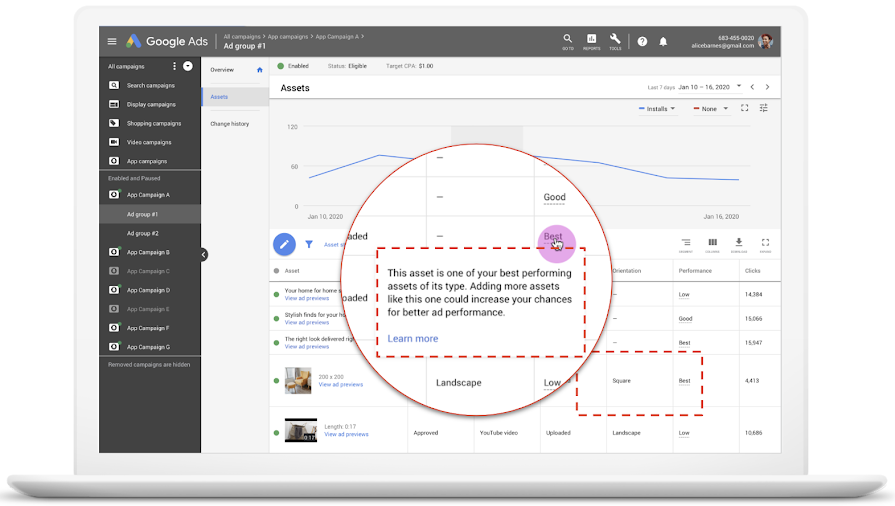
Read reviews left by your app users and listen to their feedback to understand their experience using the app so you can fix any issues and optimize conversions.
“If you don’t listen closely to your most valuable or ideal users and customers, you’re going to have a hard time creating relevant, valuable content.” — Jeff Fuhriman
4. Identify and Define Each Step in Your Buyers’ Journey
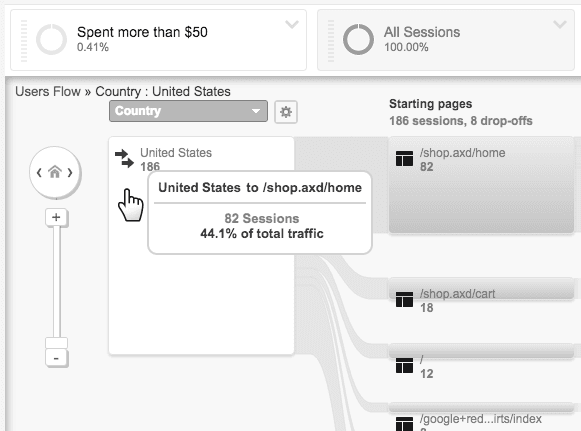
Your app users’ journey, also called a funnel, maps out the steps taken from install to making a purchase.
Before you can track events and learn about your consumers’ behavior, you must have a clear understanding of the process.
Look at the completion rates on each step to identify areas that need improvement to increase conversions.
“Every aspect of marketing is entirely useless unless it produces conversions.” — Jeremy Smith
5. Only Measure What Matters
Analytics can be overwhelming and waste time and money. Therefore, you should identify your KPIs and only use the metrics that are important and match your business goals.
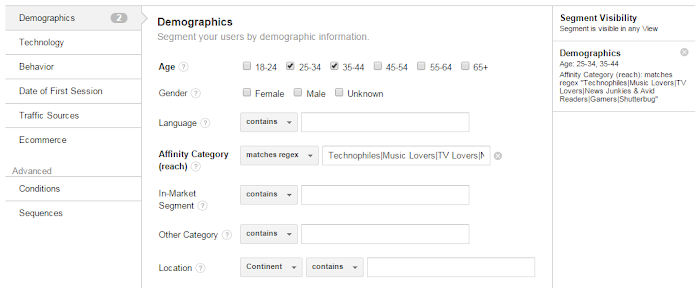
As Andrew Chen, General Partner at Andreessen Horowitz says:
“Don’t build metrics that aren’t going to be part of your day-to-day operations or don’t have potential to be incorporated as such. Building reports that no one looks at is just activity without accomplishment and is a waste of time.”
Outline questions that are important to your business and be sure to measure and track everything that will answer those questions.
6. Test, Test, and Test
Before releasing your app, make sure it works on every device for every potential user to ensure customer satisfaction.

Your app must work on multiple devices so that you can reach your targets wherever they are. Be sure to thoroughly test because you do not want to damage your reputation or prevent users from accessing your app.
7. Focus on the Onboarding Process
No matter how great your app is, if users have difficulty getting started using it, it will not matter because they will not.
“Remove barriers to entry in any way possible. The fewer the barriers for the user, the more likely they will be to convert when onboarding.” – Kirk Simpson
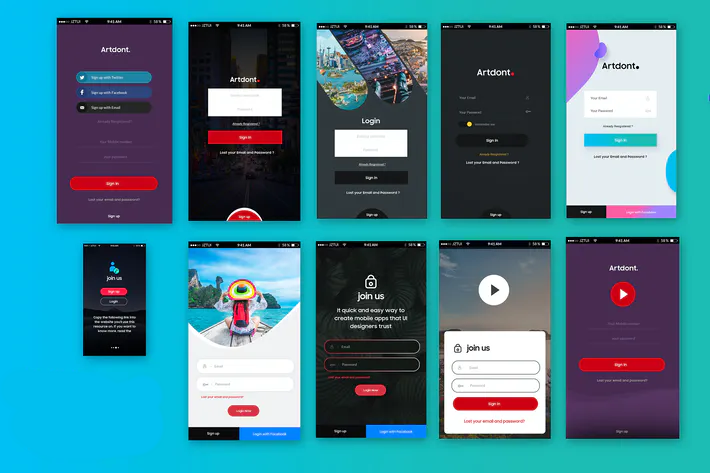
Make it as easy as possible for users to get started with your app so they will see the actual value of it. This includes simplifying the sign-up process by reducing how many steps it takes to create or sign up for an account.
It also helps to allow for multiple registration options, such as offering the ability to log in with Google or Facebook.
8. Perform A/B Testing
When you make changes to your user funnel, the best way to test the effects is to do A/B testing. Change only one aspect at a time and compare performance against the original version.
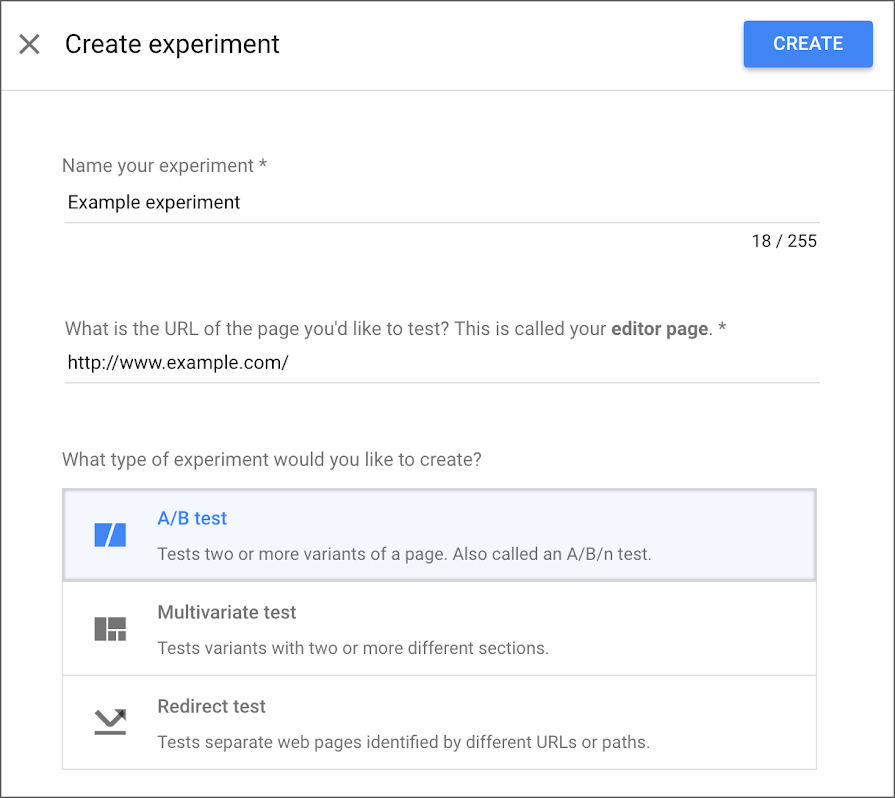
If the change you made improves results, you can have confidence that implementing the change can improve conversions.
9. Make Your Listing Count
The way you list your app in the app store plays an integral role in getting users to download it. Keep in mind that most app sites have a “read more” section that visitors can either open or not.
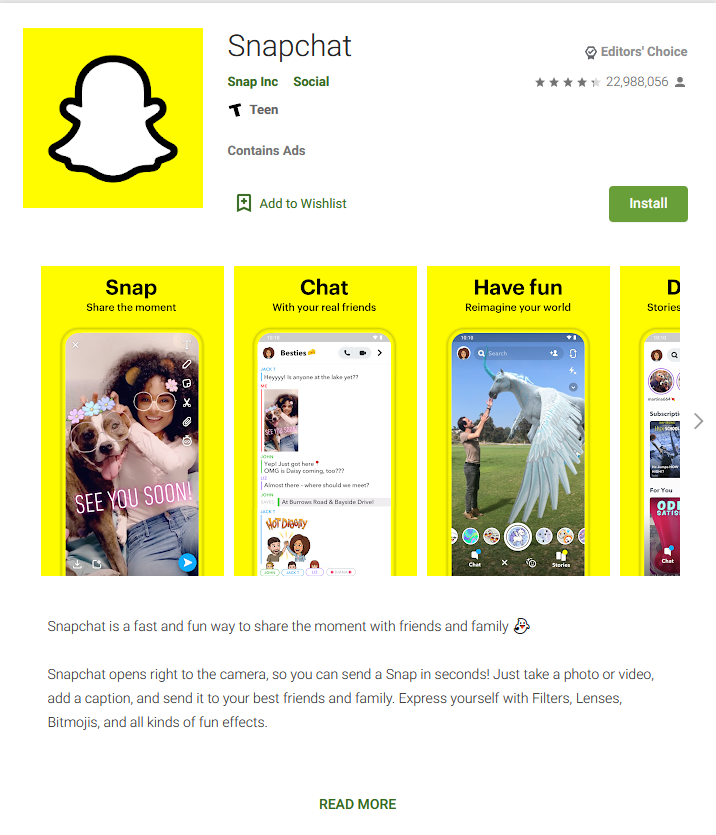
Make the best use of your online real estate by listing users’ pain points and the benefits of your app in the top part of the listing.
Use persuasive messaging that clearly identifies the value of your app.
Which Industries Benefit the Most from Mobile Apps?
The reality is that in today’s business scenario, all industries can use apps to maintain a competitive edge.
Innovative technology through mobile apps enables businesses in all industries to simplify their business operations to attain maximum benefits.
Numerous industries have already taken advantage of mobile apps to improve conversions. Each industry’s mobile app has its own unique benefits and features to connect with customers.
Education Industry
The learning process is much easier and more affordable with the added convenience of mobility. E-learning is the latest trend in the education sector.
Educational mobile apps and their analytics help learners understand the contents of their lessons quickly, collaborate with teachers and other students, personalize the experience, bridge the geographical gap, and improve the quality of their education.
Retail Industry
If there is an industry where customer service is most important, it is the retail industry. Mobile apps offer retailers the opportunity to provide their target market a seamless omnichannel buyers’ journey.
They are invaluable as a medium to engage consumers, improve relationships, develop loyalty programs, enhance their shopping experience, improve in-store operational efficiencies, and increase retail sales.
Retail app data is actionable and adds value to both the companies that use it and their customers. Read A Retailer’s Guide to App Analytics to learn more about how to use this data.
Financial Industry
People use their mobile devices for routine banking activities such as paying bills, transferring money, and checking account statements.
It is no longer necessary to go to a bank to deposit a check. Mobile apps can do that for you, too.
As more people invest online, financial institutions offer stock trading apps that cater to digital investors’ interests, are easy-to-use, and have the latest tools for real-time research data and risk assessment.
Travel Industry
People can avoid dealing with a travel agent and make their own arrangements, find the best flight and hotel deals, book car rentals, and do anything else needed for a trip.
There is no shortage of travel-related apps to choose from when users want to plan their next getaway. However, this can be a double-edged sword.
Travel app developers face challenges related to mobile analytics and measurement. Analytics help travel marketers by offering specific use cases and practical advice, including how to optimize retargeting campaigns and user acquisition.
Healthcare
Apps built for the healthcare industry allow users to effectively manage their insurance claims, medical conditions, lab results, appointments, and prescriptions.
From the provider’s perspective, mobile apps enable doctors and other healthcare professionals to access health records and diagnoses, read medical instruction notes and other vital internal matters related to patients.
Big data and analytics facilitate resource management by using available statistics to predict patient flow, offer the most effective treatments, and predict diagnoses.
Keep Your Focus on the Consumer and In-App Behaviors
Downloading your app is not enough. You want users to install it and use it regularly. User retention and app engagement are equally, if not more important, than user acquisition.
Loyal, long-term customers increase the average lifetime value and number of conversions. Seriously consider using mobile apps to generate more profits.
About the Author

Julie works to grow small businesses, increasing their online visibility by leveraging the latest in Internet and video technologies. She specializes in creative camera-less animated video production, custom images, content writing, and SlideShare presentations. Julie also manages HubSpot CRM, blog management, email marketing, marketing automation, and social media for her clients.

